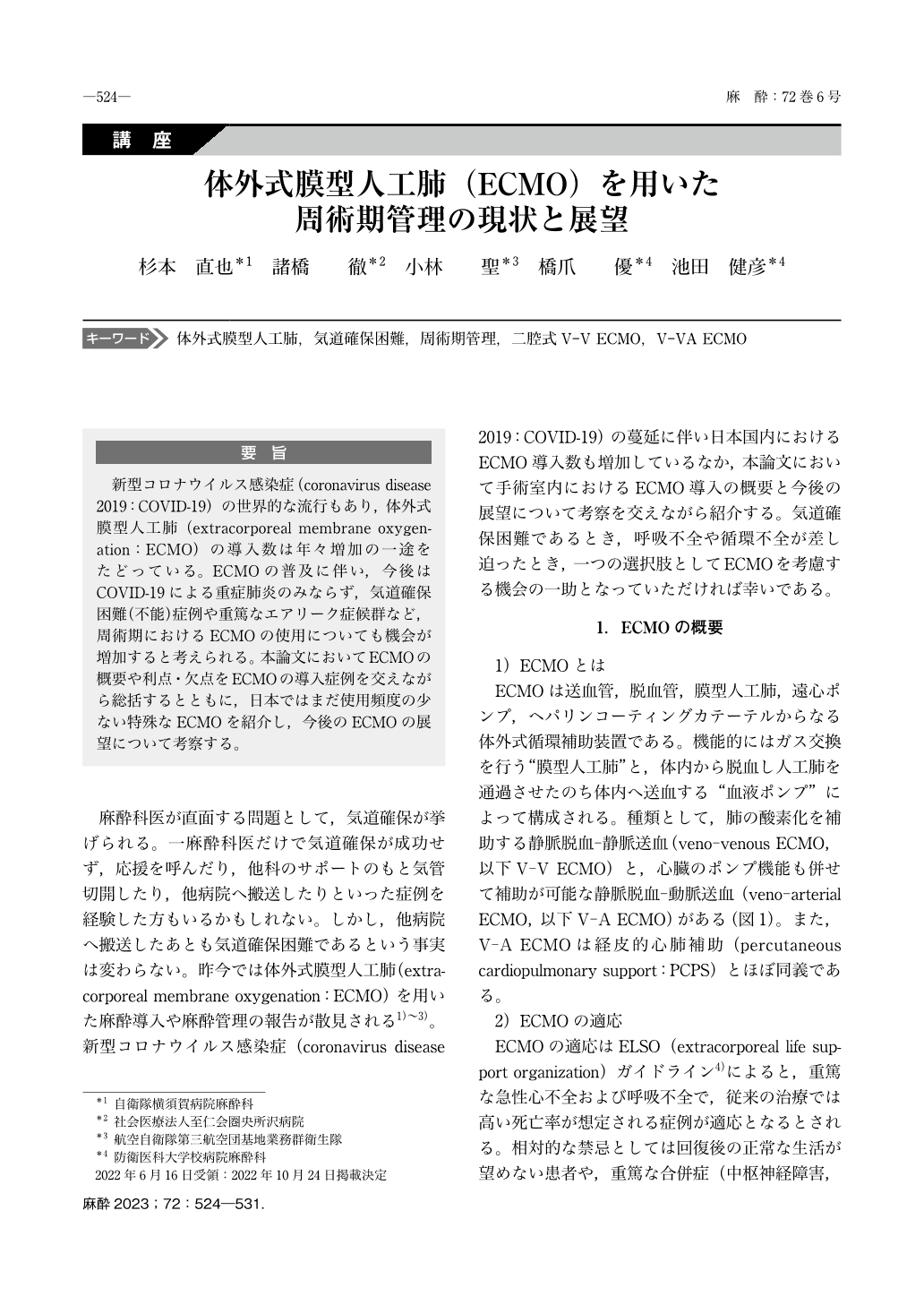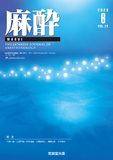Japanese
English
- 有料閲覧
- Abstract 文献概要
- 1ページ目 Look Inside
- 参考文献 Reference
要旨
新型コロナウイルス感染症(coronavirus disease 2019:COVID-19)の世界的な流行もあり,体外式膜型人工肺(extracorporeal membrane oxygenation:ECMO)の導入数は年々増加の一途をたどっている。ECMOの普及に伴い,今後はCOVID-19による重症肺炎のみならず,気道確保困難(不能)症例や重篤なエアリーク症候群など,周術期におけるECMOの使用についても機会が増加すると考えられる。本論文においてECMOの概要や利点・欠点をECMOの導入症例を交えながら総括するとともに,日本ではまだ使用頻度の少ない特殊なECMOを紹介し,今後のECMOの展望について考察する。
Due to the worldwide epidemic of COVID-19, the number of extracorporeal membrane oxygenation(ECMO)introduced is increasing year by year. In recent years, there are some reports of induction of anesthesia using ECMO for patients who have difficulty in securing an airway. There are various criteria for introducing ECMO depending on the facility. In addition, department in charge, detailed planning and communication are required among multiple participants such as vascular surgeons, cardiologists, and clinical engineers. In most cases, Veno-Venous(V-V)ECMO and Veno-Arterial(V-A)ECMO are already introduced with major respiratory and circulatory disorders. Even after introducing ECMO and overcoming those critical situations, it is necessary to quickly identify the patient’s condition and seek a solution when an abnormality occurs.
In this report, we will summarize the outline of ECMO in two cases of introducing ECMO, present special ECMOs not used frequently in Japan, and consider the future prospect of ECMO. Various troubles and complications such as recirculation and differential hypoxia exist in the conventional V-V ECMO and V-A ECMO. Special ECMOs such as Bi-caval dual lumen ECMO and V-VA ECMO have the potential to solve such problems.

Copyright © 2023 KOKUSEIDO CO., LTD. All Rights Reserved.


